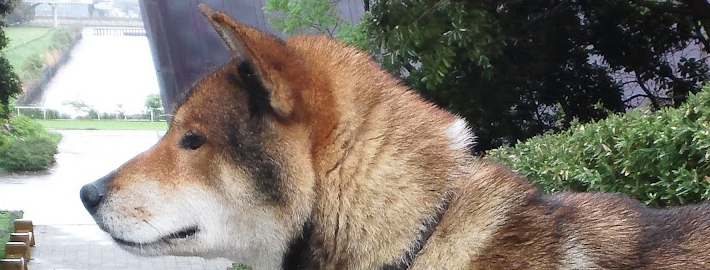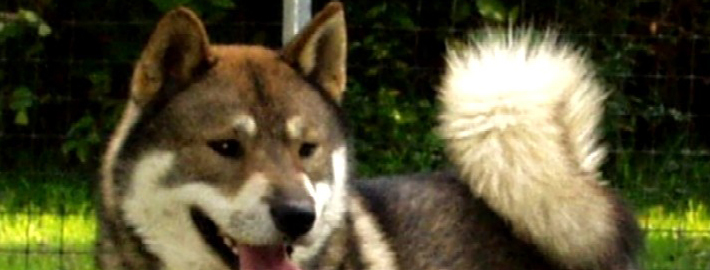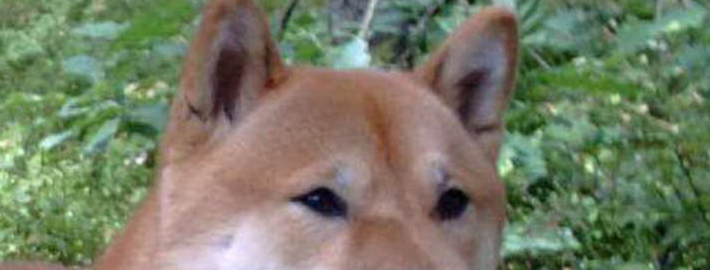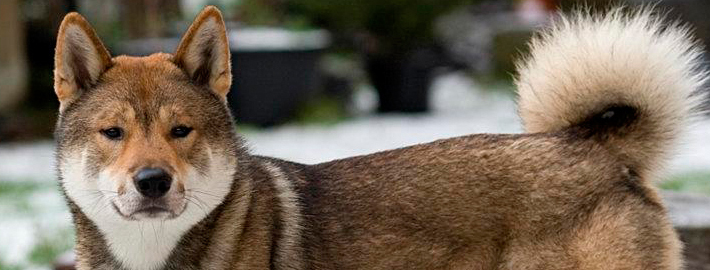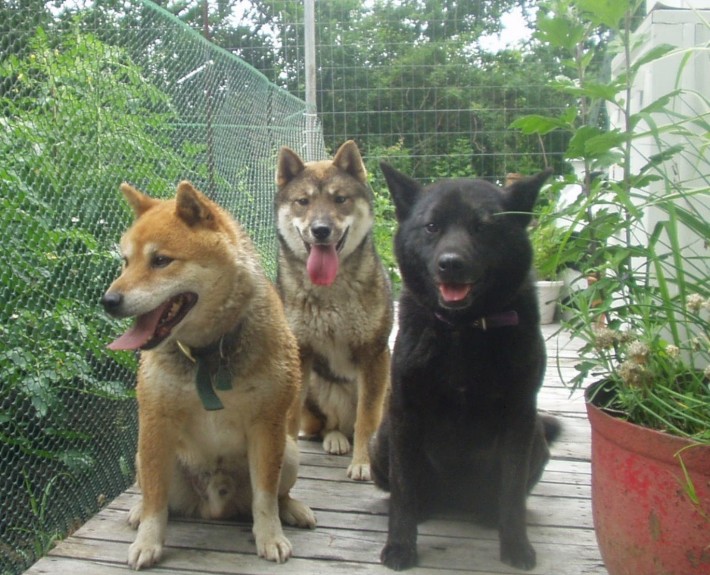What makes the Shikoku Unique?
The Shikoku (四国犬 Shikoku-inu?, alternative names: Kochi-ken, Mikawa Inu, Japanese Wolfdog) is a native, primitive Japanese breed of dog from Shikoku island that is similar to a Shiba Inu. The Shikoku is not a recognized breed of the American Kennel Club, but it is recognized by the Japan Kennel Club, an organization recognized by AKC as an official foreign registry[1] (AKC recognizes the Shiba Inu, however). The Shikoku is also in the Canadian Kennel Club Hound group and the United Kennel Club, awaiting full recognition. In 1937 the Japanese Crown recognized the Shikoku dog as a living “natural monument” of Japan.
Breed Groups
Page Contents
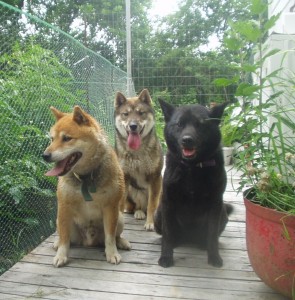
SnapShot
| Size: | Males – 17-21 inches Females – 18.5-20 inches |
| Weight: | Males – 30-55 pounds Females – 30-55 pounds |
| Origin: | Japan |
| Life Span: | 13 to 15 years |
| Colour: | Sesame (mix of black and white hairs), black sesame (more black than white hairs) and red sesame (more black than white hairs). |
| Litter Size: | 9 puppies |
Is the Shikoku Right For You?
The Shikoku dog has a great spirit and is devoted to its master. They are generally reserved around strangers and can make good watch dogs. The Shikoku dog is not for everyone though. Because of their primitive nature and strong prey drive they require proper socialization from puppy hood and obedience training. The Shikoku is well-behaved in the home but is quite athletic and enjoys a fair amount of exercise. They are wonderful companions for hiking and camping but should not be allowed to roam freely as they are hunting dogs by nature. They are a highly intelligent breed and show great aptitude for agility and obedience utilities.
In 5 Words
- Cautious
- Energetic
- Agile
- Loyal
- Brave
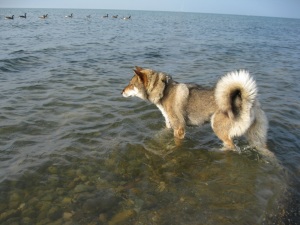
Characteristics
Learn About the Shikoku
Description
General Description
The shikoku ken is a medium sized dog with well balanced and well developed clean muscles. The muscles should be clearly visible, overweight is not prefered. It is an active breed with working capacities and active lifestyle which should be visible in an atletic build. It should have pricked ears, slightly pointed forward and an curled tail.
Short History of the Shikoku
The Shikoku is also known as the Kochi-ken “ken” or “inu,” which means dog in Japanese. Kin to the smaller Shiba and larger Akita Inu, the Shikoku-Ken is a rare breed of dog, even in its native Japan. In 1937, the Shikoku was established as one of Japan’s national treasures. The Japanese bred the Shikoku to hunt deer and wild boar in the mountainous and fairly isolated Kochi prefecture located on the island of Shikoku. Shikokus are some of the purest dog breeds due to the remote nature of the region, which greatly restricted crossbreeding.
Temperament
Their hunting instinct is strong, but they are very intelligent and obedient to their pack leader (owner), if properly trained. They are also very territorial. They must be socialized well and early to be able to interact appropriately with family members and other pets.
This dog is very loyal and fearless, but their level of intelligence also gives them much better than average judgment for a dog. You will need appropriate fencing since the instinct to hunt may override their obedience training if you try to call them back after they have caught a scent of game.
Caring for Your Shikoku
General Health
All owners of dogs and puppies are concerned about the health care of their pets and just as with humans dog health issues arise from time to time. Resolving dog health problems, including those of the Shikoku, can prove to be costly and it would be wise to consider the benefits of obtaining dog health insurance. Diseases in dogs may occur because of trauma, infection, immune system abnormalities, genetic factors, or degenerative conditions. Common health problems and questions occur in relation to the Bones, Joints, Muscles, Nerves, Ears, Eyes, Teeth and the Mouth. Other, more serious, issues can relate to the Digestive System, Heart & Respiratory Systems, Immune & Blood Systems, Reproduction and Urinary Systems.
Grooming & Bathing
These dogs shed profusely twice a year, spring and autumn. Their undercoat will come out in clumps and they will need regular grooming and brushing at this time. The rest of the year shedding and grooming requirements are minimal, unless you are showing of course.
Exercise & Training
These dogs are agile and strong, so their fence should be strong and tall. They need extensive exercise as close to daily as possible or they can develop heart and lung problems. An enclosure that is small and confining, or when there is no opportunity for sufficient exercise, behavior problems may develop. This dog needs daily interaction with the “master”, and the owner must have time for regular outings.

